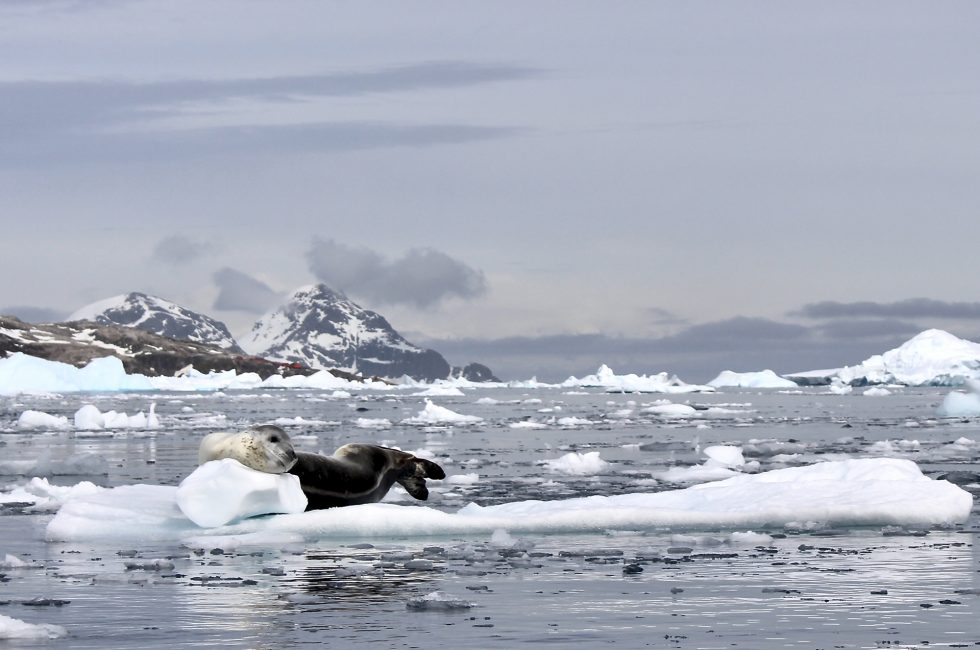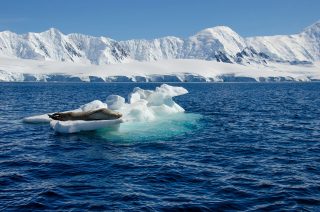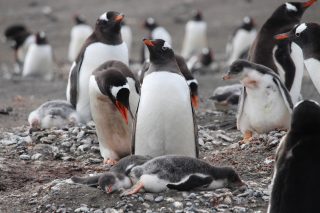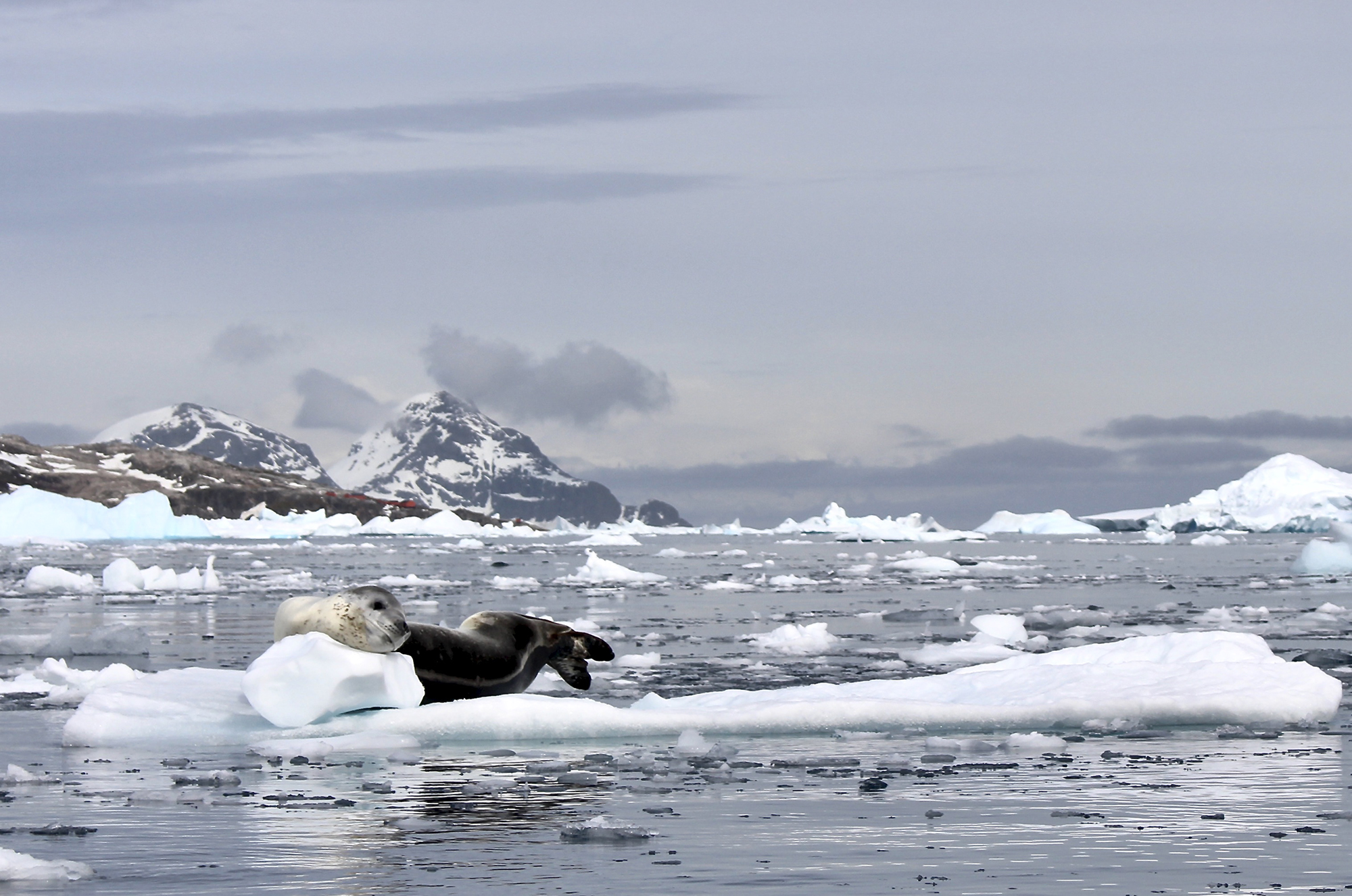
March 31, 2023
Women Explorers in Antarctica, Part 2
- as seen by -
 Veronica Miller and Sarah Edmunds
Veronica Miller and Sarah Edmunds
Since Jackie Ronne and Jennie Darlington started their yearlong expedition in Antarctica in 1947, many other women have accomplished great things on the continent. In 1968, 72-year-old Irene Bernasconi from Argentina became the first modern-day woman to lead an Antarctic expedition, with a team of other female scientists. A year later, the first women reached the South Pole. And just last year, Preet Chandi became the first woman of color to complete a solo, unsupported expedition to the South Pole.
Working and living conditions in Antarctica are not easy. Research environments range from large research stations that house about 1,200 workers to smaller and more rustic stations—such as the one pictured in the background of the leopard seal on an iceberg above—as well as remote field camps. Researchers work in close quarters and dangerous conditions, which means absolute trust of your colleagues is imperative. Unfortunately, a recent report from the National Science Foundation concluded that “sexual harassment, stalking, and sexual assault are ongoing, continuing problems in the United States Antarctic Program community.” The report also stated a commitment to identifying and addressing the problems revealed by the assessment.
While progress has been made toward gender and racial equity in Antarctic exploration, it is clear there is much more work to do. We admire the women who have fought for this progress, and we are hopeful that these challenges can be overcome so that all people can feel safe and supported as they make important contributions to understanding and protecting this amazing landscape and the wildlife that calls it home.
EDITOR’S NOTE: To celebrate Women’s History Month, Wild View is featuring posts by and about women and their contributions to science and conservation throughout March. Read Women Explorers in Antarctica, Part 1 here.
Canon EOS Rebel T5i with 55-250mm Zoom Telephoto Lens




Leave a Comment
Adams Alan D
April 28, 2024 at 10:58 am
It’s inspiring to see the significant strides made by women in Antarctic exploration over the years, from Jackie Ronne and Jennie Darlington’s pioneering expedition to Preet Chandi’s recent groundbreaking solo journey. Yet, alongside these achievements, it’s crucial to acknowledge and address the challenges faced by women in such environments, as highlighted by the recent report from the National Science Foundation.
Creating a culture of trust and respect is paramount for fostering a safe and supportive atmosphere where all individuals can thrive professionally and personally. By acknowledging and actively working to address issues like sexual harassment and assault, we can ensure that Antarctica remains a place where everyone, regardless of gender or background, can contribute to the vital research and conservation efforts aimed at protecting this unique landscape and its inhabitants. Here’s to honoring the resilience and contributions of women in Antarctic exploration while striving for a more inclusive and equitable future. If you’re inspired to explore more landscapes, consider visiting Wahiba Sands for a truly unforgettable experience. Visit Wahiba Sands.